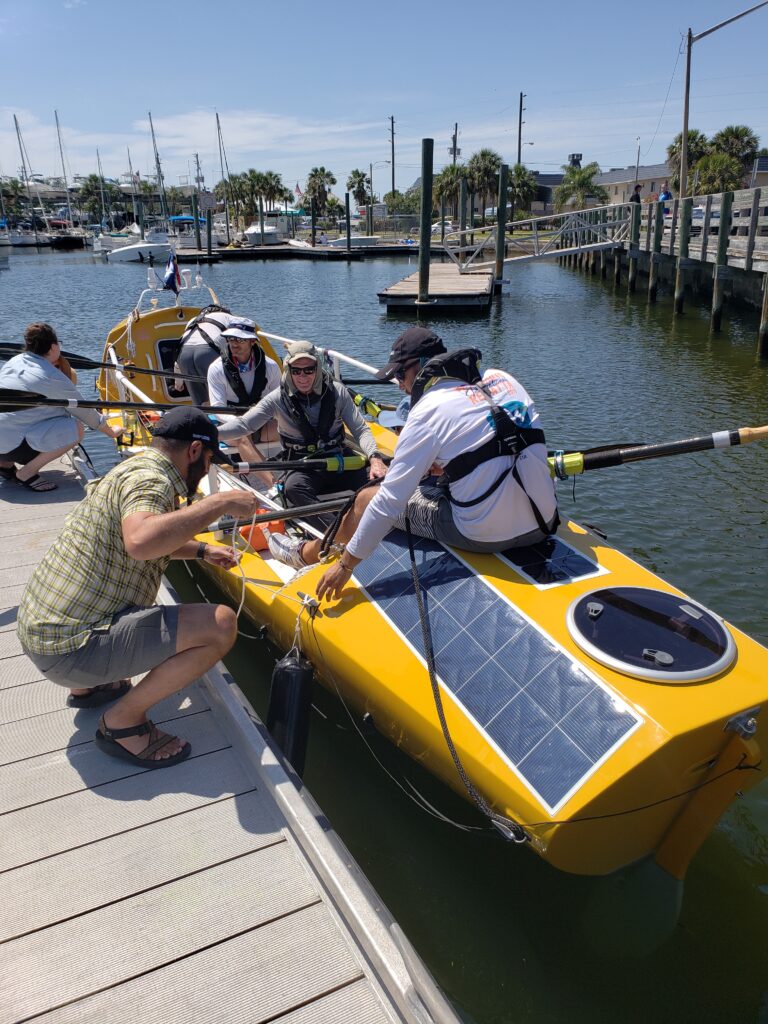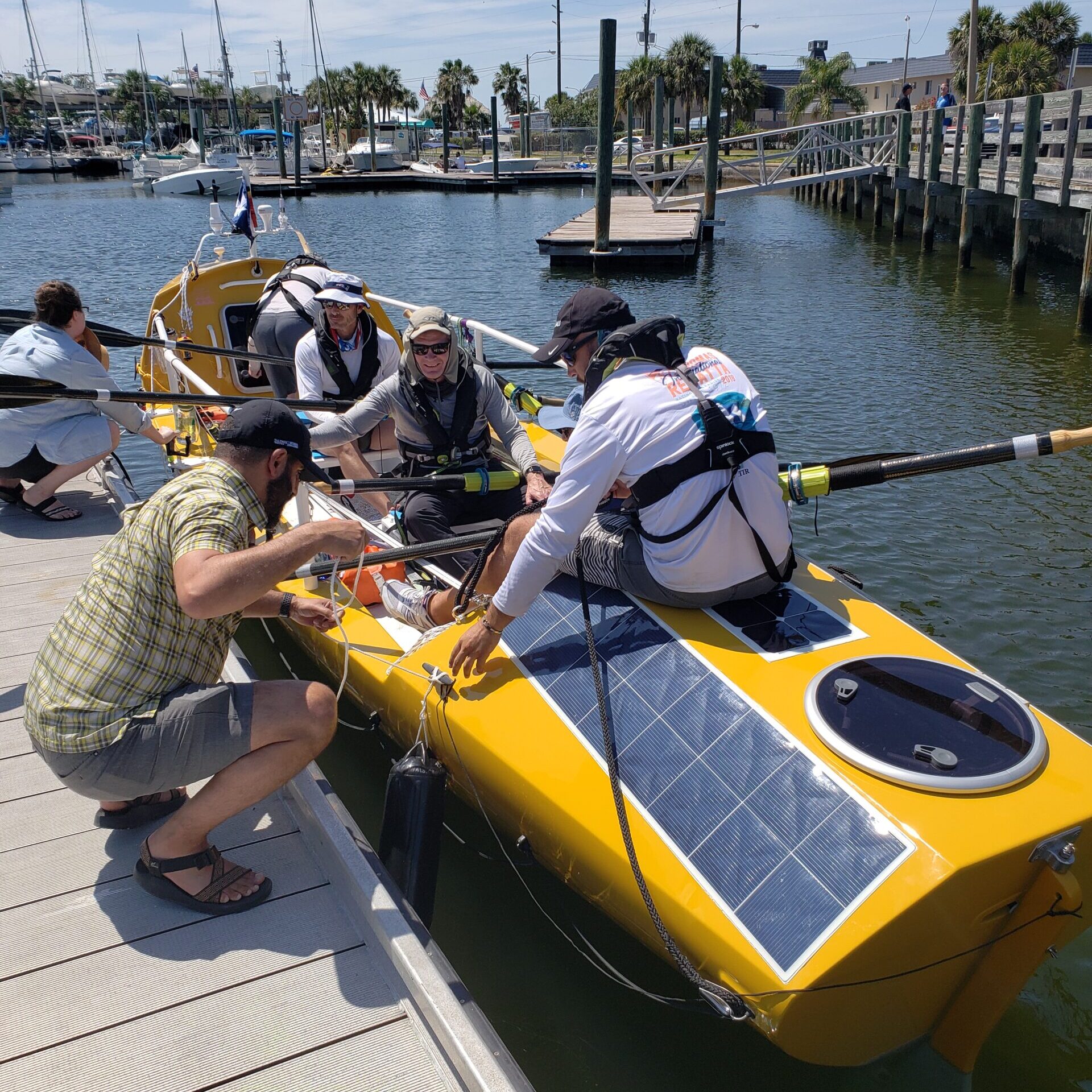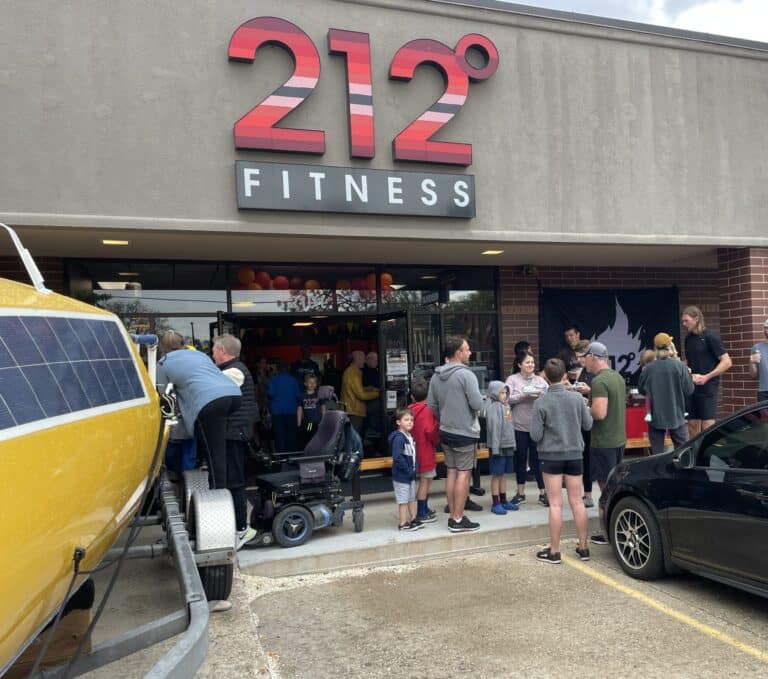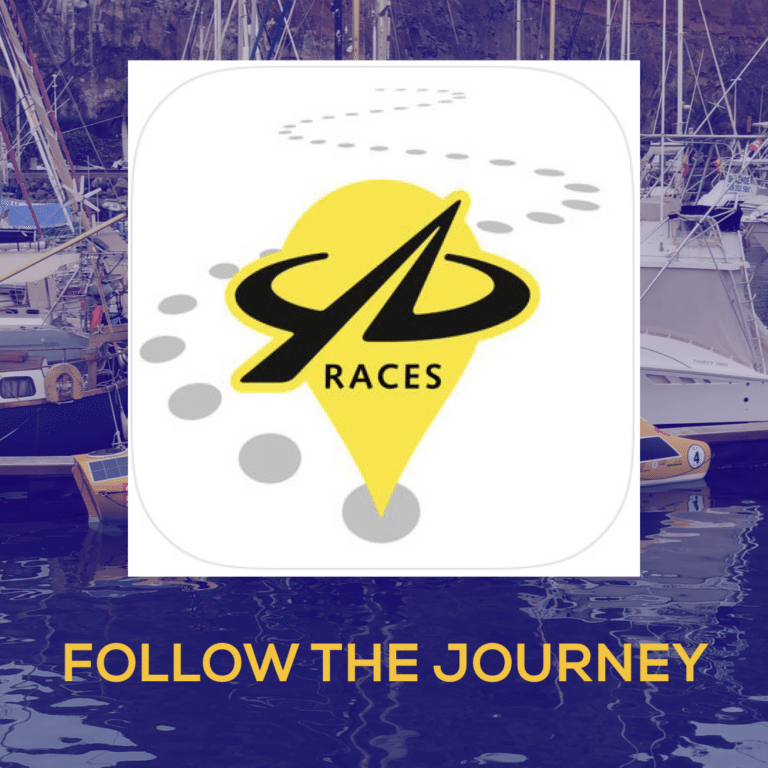In our last social media posts (TikTok, Facebook, Instagram) we mentioned an “incident at sea”. And oh boy did it throw us for a loop.

Somewhere in the Atlantic Ocean…
In early 2023, we learned that our sister-boat, Woobie, had been lost at sea. Everyone was safely rescued and the Fight Oar Die team is home. The team had this to say:
With the close of the 2022 Talisker Whisky Atlantic Challenge, the 2022 Fight Oar Die team would first like to congratulate all the teams of this year’s race. It was an honor to spend time with and meet so many amazing people from around the world. We watched each finish and are grateful that you all arrived safe and sound. We went out with a goal and mission to 1) Complete the 3000-mile ocean crossing and 2) Inspire veterans around the world that may be struggling with mental health issues and show them there is more life to live after military service. Our decision as a team to wait to share our story was to keep all family members of rowers that were still on the water from extra stress and worry.
Leading up to the 28th of December, the team had rowed 867 NM and had been facing large aggressive [swells, over 30°, and 30+ knot winds. The sea state up to this point had been rather rough and winds had been pushing the team south with very little margin for error. With the team dropping south and the Trade Winds not establishing as well as hoped for, the team made a W/SW cut to prevent from dropping too far south.
On December 28th at approximately 0330 UTC in the morning, the boat was hit by a strong gust of wind that can only be described as “a freight train.” The boat was just cresting the top of a wave when the wind flipped the boat upside down, straight down a wave. Will and Chad, who were on deck and harnessed in, were ejected from the boat.
Upon realizing that the boat was not self-righting, they attempted to right it manually, but they were unsuccessful. The decision was made to deploy the life raft which was secured to the deck, but now under the boat. Will and Chad were able to communicate with Nick and Tommy, through the closed hatch doors, inside their cabins during the deployment of the life raft. Nick, in the aft cabin, relayed he was taking on water and Chad assisted Am in getting out of the cabin, and then he made his way to the life raft. Upon opening the door to the aft cabin, the aft end of the boat dropped substantially further, now that it had filled with water. While Nick secured the life raft to the side of the boat, Will used the external bow cabin pump to start removing the water that was slowly coming into the bow cabin.
While Will was pumping, Chad worked on removing the “Go-Bag” from the rail, and cleared other unnecessary items for Will and Tommy to have a clear path to the life raft. While all this was going on, the life-raft was damaged and began leaking. Nick was able to plug the hole with his thumb, while still keeping hold of the boat. With Will pumping, it provided Tommy time to grab a @tellite phone, handheld VHF radio, and handheld GPS unit. Chad returned to the life raft with the “Go Bag” and immediately activated the emergency EPIRB and backup PLB. Will then assisted Tommy with getting out of the bow cabin and they made their way to the life raft. With all four crew members in the life raft, the team tied a line to the nose of the boat in an attempt to stay attached to it.
But, due to the sea state, within a few minutes, the line attaching the boat to the raft snapped, and the last time they saw the “Woobie”, it was floating away upside down. The time was 0413 UTC. The crew had gotten into the life raft with 3 PLB’s and an EPIRB, which were immediately activated, one sat phone, which got wet and became inoperable during the evacuation of the boat, a waterproof WIF radio, a GPS unit, and a small assortment of other emergency gear. The hole in the life raft tube was eventually plugged (mostly), though it still needed to be pumped up every 30 minutes. While the two guys were pumping, Will would make a Mayday call on the radio. This 30 minute routine continued throughout the day.
The team assumed that with their PLB’s activated, the safety officer of the race coordinators, Atlantic Campaigns, had been notified and a rescue was under way. This was not the case. The emergency signal that was transmitted via PLB, was transferred to the closest country to the team at that time, a group of islands called Cape Verde, Africa. But that country did nothing with the signals, and ignored #em. No rescue had been coordinated. At approximately 1830 UTC, the team made contact with the 700′ cargo vessel Hanze Goteborg, which was about 15 nautical miles away at the time, and was able to relay their GPS location. The Hanze Goteborg had left its last port in South Africa on Dec. 11, after a 24 hour weather delay, and was headed north in the Atlantic Ocean with a destination of Montreal, Canada.
They were the only ship within 400 NM. After several hours of communicating back and forth, the Hanze Goteborg slowed way down and made its way towards the coordinates the team had relayed to them in an effort to rescue them. The ship spotted the strobing lights of the team in their life raft and positioned the ship right next to the life raft. The team and the crew of the Hanze Goteborg then executed one of the most dangerous procedures that can take place in a maritime environment, a ship to ship transfer, in a 20’+ swell and at night. One at a time, each team member climbed up a 20′ rope ladder that hung over the side of the ship. With Tommy being the last one on deck, the team was all safe at 2130 UTC, having been in the life raft for nearly 18 hours.
The team spent 13 days on the Hanze Goteborg with the 19 crewmembers of the ship, and traveled 3016 miles to a port just outside of Montreal, CA. The team was greeted by their significant others and a few others upon arrival into Canada. Investigations have since found that the life raft used was not designed for those conditions, for that amount of time. We, the 2022 team, would like to thank everyone that supported our campaign to help raise awareness for the issues that plague the Veteran community. Though we didn’t finish the race, we believe that we are alive today for a reason. You will continue to see us in our respective communities speaking about Veteran issues and our life experiences, and the miracles that happened that day. Also, thank you to the amazing crew of the Hanze Goteborg, they saved our lives that night.
Much Love,
FightOarDie Instagram
Chad, Will, Tommy, and Nick
Only 2 USA Teams
When we did our first race, the Talisker Whisky Atlantic Challenge in 2018/2019, we were one of only two USA teams. The sport of ocean rowing took off in northern England and, like so many other rowers, we were inspired by the film Four Mums in a Boat. Our team captain, Tim Ryan, saw a showing at Kingsbury Hall at the University of Utah and after a conversation with Alan Alderman, Row4ALS was formed. All funds raised by Row4ALS go to the University of Utah Clinical Neurosciences Center, ALS Clinic.
The Race Organizers Had Something to Say
The main thing that we were asked to prove was that our boat could self-right in the event of a capsize. These boats are designed to roll and self-right. It seems the Woobie got stuck upside down, for some unknown reason — so we have to look at everything from the mathematics involved in weight and balance, to making sure our safety protocols are up to snuff.
Watch solo rower Gabi Schenkel of The Swiss 1s get rolled by a rogue wave:
Find a Naval Architect
One of the items on the new list included having a naval architect sign off on the mathematical dynamics and computer modeling of the boat. Tim met up with Naval Architect Tim Nolan and they set about running new models based on a variety of conditions.
At first glance, the modeling did not look good, giving us great cause for concern about our safety and eligibility to participate in the Pacific Challenge.
The reason for the concern is that our boat, like Woobie, is modified from the original Spindrift design. It’s longer to accommodate three rowing stations, including a modified rowing station for Alan—the first person diagnosed with ALS to complete the World’s Toughest Row. So we had to test it. In the ocean. And hope it didn’t sink.
Ocean Roll Test
n Spring 2023 we were making our 120-hour training row from Monterey Bay to Port San Luis, While in Monterey, we arranged for the Moss Landing Boat Yard to conduct our roll testing along with a Marine Surveyor and an Engineer. The boat had to be fully loaded with all race required gear and equipment, 700 pounds of simulated food weight and crew! The rowers all had to be inside the boat and go through the spin cycle. Fun!
How do you roll a boat? You tie a rope to the far side gunnel and then lift with a crane until it tips over. And that crane had to work hard! She didn’t want to roll, but physics won out and over she went…
…and back up she came. A collective sigh of relief. Not only does this mean we’ll be able to do the 2023 row, it means that while we were in the ocean in 2018/19 we were safe. That was a murky fear floating in the bottom of our hearts. What if it was unsafe for the 52 days we were out? Were we one hurricane away from being lost at sea? Turns out, she’s safe and sound and was ready to roll again. Then again. In total we conducted three successful rolls. We provided video proof to the race organizers and submitted a written report. Along with the other rules and tests we had to run, we were approved to race in 2023.
Farewell, Woobie
Woobie is still floating through the Atlantic Ocean somewhere. Most likely, she’ll turn up on a beach in the Caribbean in six months or so. She wouldn’t be the first to find shore, and we hope she does!
We’re so glad that everyone on the Fight Oar Die team is alive and safe. We’re happy to be approved to row and freshly sobered around safety, clip lines, go-bags, and life rafts.
Follow Along
Follow along as the 2023 team preps and races across the Pacific Ocean, starting June 12, 2023. They will row from Monterey Bay to Kauai, a distance of 2500 miles. The race is completely self support and the team will take everything they need for up to 90 days at sea.
- Instagram: Row4ALS
- TikTok: Row4ALS
- Facebook: you guessed it, Row4ALS
- YouTube: Row4ALS
- YB Races: An app you can download from the app store or google play to watch the boats in real-time.
If you are able to help support our mission to raise funds for research, awareness, and treatment of ALS and support the University of Utah Clinical Neurosciences Center, ALS Clinic, in Salt Lake City, Utah please donate here or consider a corporate sponsorship.


